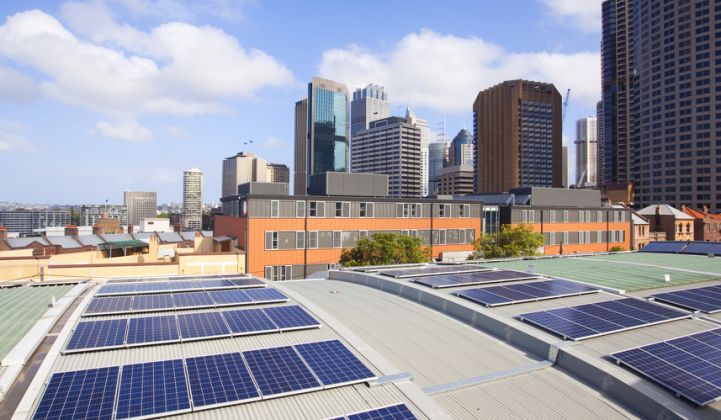SolarCity "activated" a $1 billion fund earlier this year, looking to finance roughly 300 megawatts of U.S. commercial solar systems. Investors in the fund include Credit Suisse, the bookrunner for SolarCity’s securitization transactions.
The commercial solar market is coming on strong; GTM Research predicts greater than 40 percent growth in non-residential solar deployment for both 2015 and 2016.
SolarCity credits its acquisition of Zep's mounting system as a significant contributor to the company's reduction in residential installation cost. Erik Fogelberg, SolarCity's VP of commercial sales and storage solutions, said, "Just as Zep was a step-function improvement on the residential side, innovations on the commercial side are proving to be just as powerful."
SolarCity lowered its cost ~20 percent to $2.09 cents per watt in 2014 despite what CEO Lyndon Rive called "roughly flat" solar module pricing. The company looks to reach a cost of $1.90 per watt by 2017.
In a previous interview, Zep Solar's founder Jack West said that the lightweight ”snap-together” mounting system will allow businesses to fit 20 percent to 50 percent more panels on each roof. It promises to do for commercial solar what Zep has done for residential, while not requiring any roof penetration and using less ballast.
Fogelberg noted that a 200-kilowatt project that once might have taken two weeks to complete now takes two days. That comes with a "massive reduction in labor costs" and what he called "a really clean install."
Fogelberg continued, "It's now the only technology we're using on commercial rooftops," and added, "We bid energy storage at every job that has demand charges."
As GTM has reported, west-facing panels could potentially be more attractive to certain customers with high peak loads. Zep's West noted that the east-west orientation flattens the PV peak and sends more energy to the "shoulders," while allowing inverter size to be reduced because "you don't have to size it for one minute" of peak daily production. Zep also designed its mounting system to address some of the workflow and logistical issues found in real-world commercial rooftop applications.
SolarCity mounting hardware for flat commercial rooftops
According to GTM Research, the cost for a medium-scale commercial system averaged $2.25 per watt by the end of 2014. This is down from $2.53 per watt in the first quarter of 2014.
Brad Buss, SolarCity’s CFO, said, “SolarCity has installed more than 1,800 commercial solar projects in 21 states to date, and we’ve barely scratched the surface of the addressable market.”
In other recent commercial solar news:
Sungevity, the No. 3 U.S. provider of residential solar installations (according to the Q1 2015 GTM Research Leaderboard) recently started its move into the commercial market. It's a new channel for the firm as it joins forces and partners with commercial-scale solar financier Sol Systems. While SolarCity is going after investment-grade customers -- businesses, schools, municipalities, and government organizations -- with its new fund, Sungevity will focus on what it calls the "underserved small-business sector," with systems sized between 20 kilowatts and 300 kilowatts.
According to its recent earnings call, Vivint will enter into a tax-equity partnership "in the near future" to finance its C&I ambitions. Vivint will turn to partners to handle the engineering, permitting, construction and O&M work associated with its C&I projects, at least initially.
Greenskies Renewable Energy signed an agreement to install solar arrays on the roofs of 180 Target stores and distribution centers, for a total of approximately 100 megawatts. Greenskies will design, develop, finance, own and maintain each of the solar installations, while Target has agreed to purchase all of the electricity produced at each of the sites.
In February, Apple announced that it would take the output of a 130-megawatt section of First Solar's California Flats project in Monterey County for $848 million in a 25-year agreement.



